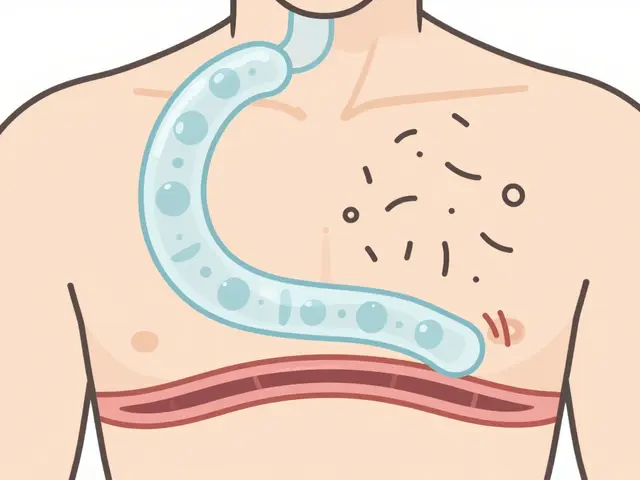Doxylamine: Uses, Dosage, Side Effects, and Safety Tips
Doxylamine is an over-the-counter antihistamine most people use for short-term insomnia and allergy symptoms. It makes you sleepy, so many buy it as a sleep aid. You’ll also find it in combination products for colds and in prescription blends for pregnancy nausea (doxylamine plus vitamin B6).
How it works: Doxylamine blocks histamine receptors in the brain and body. That reduces allergy reactions and causes drowsiness. The sleep effect usually starts within 30 minutes and lasts several hours.
Common uses and dosing
Typical OTC dose for adults as a sleep aid is 25 mg taken 30 minutes before bedtime. For allergies, doses vary but often match the sleep dose. Pregnant people may get doxylamine combined with pyridoxine; follow your health provider’s directions—do not self-prescribe. Children’s dosing depends on age and product; always read the label or ask a pharmacist.
Take it only when you can sleep. Avoid using doxylamine nightly for months—if you still can’t sleep after a few weeks, talk to your doctor about other options.
Side effects, risks, and interactions
Most common side effect is drowsiness. You may also notice dry mouth, blurry vision, constipation, or difficulty urinating. Older adults are more likely to get confusion, dizziness, or falls from the drug’s anticholinergic effects.
Avoid alcohol and other sedatives while using doxylamine—mixing them raises the risk of dangerous drowsiness. Do not combine it with MAO inhibitors used for depression; that can cause severe side effects. Tell your doctor about other medications that cause drowsiness, blood pressure drugs, or medications with anticholinergic properties.
If you have glaucoma, enlarged prostate, breathing problems (like COPD or sleep apnea), or severe liver disease, check with a clinician before taking doxylamine. If you experience a fast heartbeat, high fever, severe confusion, or trouble breathing, stop the drug and seek medical help.
Pregnancy and breastfeeding: The doxylamine–pyridoxine combo is a common and guideline-supported choice for nausea and vomiting in pregnancy, but take only under medical advice. Doxylamine passes into breast milk in small amounts; watch the baby for unusual sleepiness and ask a doctor if concerned.
Practical tips: Use the lowest effective dose. Try to avoid driving or operating machines for 24 hours after first doses. Store tablets at room temperature away from children. If you miss a dose, skip it—don’t double up.
When to call a doctor: if sleep problems persist, if side effects are severe, or if you suspect an overdose (severe drowsiness, agitation, hallucinations, or very high heart rate). Your healthcare provider can suggest safer long-term sleep strategies and check for underlying causes of insomnia or allergy.
Alternatives and next steps: If doxylamine feels too strong or causes dry mouth, try non-drug sleep habits first—consistent bedtime, cut caffeine after noon, dim lights an hour before bed. Over-the-counter melatonin is an option for short-term use but talk to your doctor if you take other medicines. For chronic insomnia or persistent allergies, ask about cognitive behavioral therapy for insomnia (CBT-I) or safer long-term allergy treatments. Always review your full medication list with a clinician regularly.

Doxylamine for Sleep: Does It Really Help You Recover from Sleep Deprivation?
Struggling with sleep debt and thinking about doxylamine? This article uncovers whether this common over-the-counter sleep aid actually helps you catch up on lost rest. We dig into how doxylamine works, what you need to watch out for, and whether it's a real solution for sleep deprivation. You'll get practical tips, straight-up facts, and a dose of New Zealand perspective on rest and recovery. Dive in for the truth about doxylamine and sleep.
View More




